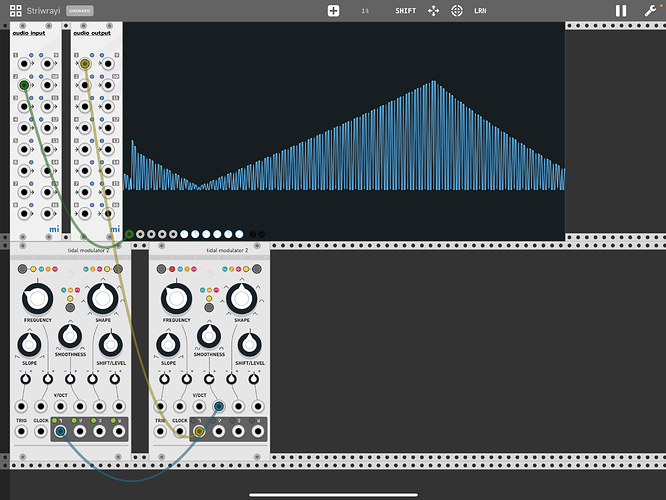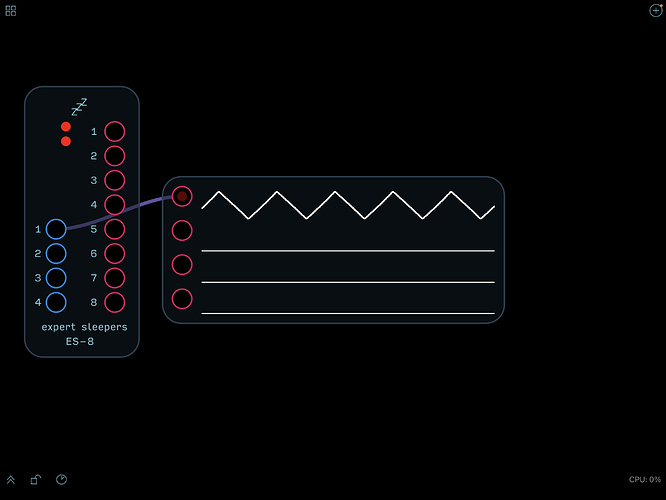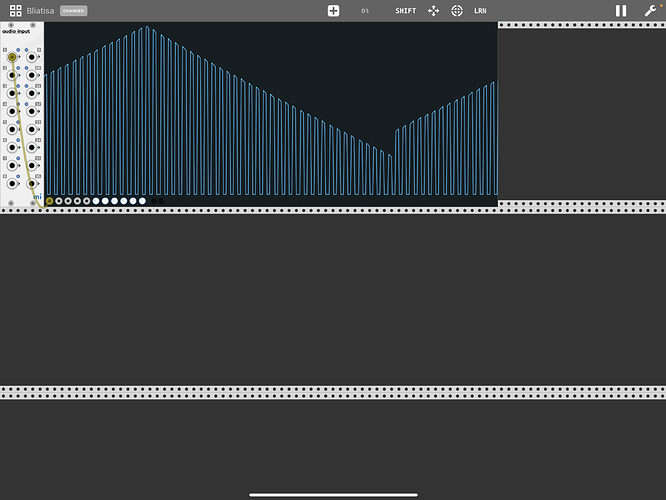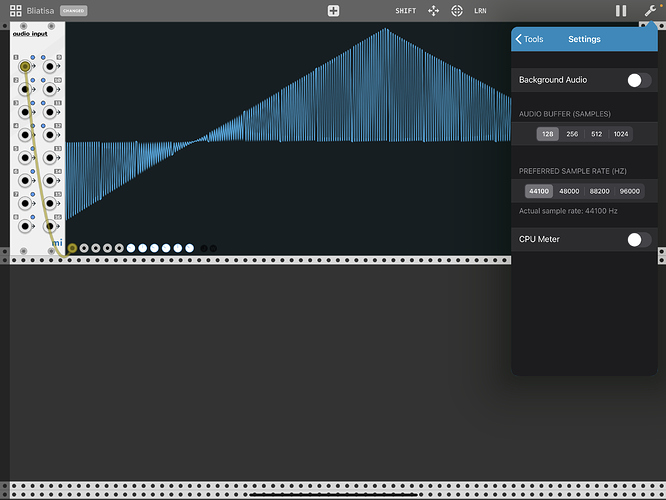There’s a bunch of videos about using ES modules with VCV Rack, it’s pretty much the same for miRack on iPad, just the audio modules look different. For example these two are about ES-9: this and this.
Thanks for the note regarding the config on the ES-9, is it just about setting inputs to DC? I’ve used outputs for clock and they were ok.
Agreed on all above, ES-8/ES-9 is a perfect combo for miRack.
Yes optional DC blocking filters is for inputs only.
Thanks for your reply! This works perfectly while using miRack by itself with the Es9! I experience next to no latency and the possibilities of my portable rack have been multiplied, very content!
The issue itself remains as that with AUM running the outputs don’t work in miRack. The 14 inputs still work parallel, so you can feed the signal both to miRack and AUM. Whereas the 8 outputs corresponding to channels 8-16 on the virtual Output seem to be blocked.
Sorry from your message it’s not quite clear what exactly you’re doing. Are you running miRack AUv3 inside AUM or just standalone miRack alongside AUM? If the latter, I’m not sure it’ll work as miRack and AUM will try to configure audio interface for different number of channels. But I’ll try it later today and see what happens.
Well sorry for being unclear. For me the 8 outs (channels 8-16) only work when running AUM and miRack separately. When miRack is being hosted by AUM one can not send cv or audio from miRack to the Es9 TS outputs.
I’m diving into eurorack - es-9, modules and case are on their way.
How are you getting on with your setup? Any tips or tricks with this hybrid setup?
Since I am too cheap to buy an ES-8/9, I got mirack working with my DIY interface made of a modified cheap chinese soundcard. I bypassed the blocking caps and amplified the signal with opamps. Gives me 6 dc coupled outs tracking over about +/- 8v.
Hello. I’m pretty new to this thing and I want to ask you if I can use the app like an effector and feed it via an audio cable. I tried alot but it works just with the built in microphone. I don’t have the Expert Sleepers module. Thank you!
Yes you can. I believe you’ll need an external USB audio interface. It doesn’t need to be a specialised one like for the audio. For example U series of Zoom audio interfaces (https://zoomcorp.com/en/us/audio-interface/) are good and not too expensive, and most also provide MIDI IO.
Thank you for the answer. But how i can, I already have an audio interface. Can you explain the routin please?
Tried sending some CV to miRack from an es-8 today and this is what I got from a simple triangle lfo from maths:
Is this due to mirack requiring dc coupling on certain inputs? I’ve not been able to find a configuration tool for the es-8 like the es-9 has to do so, if that is the case. I connected it to VCV rack and it works fine. Audulus shows the waveforms correctly as well. The tides are just there to help me test.
Curious on what this could be, i’d like to be able to send CV to miRack from my modular via ES-8… Thanks for any help!
Can you post a screenshot of VCV or Audulus of the same signal for comparison?
And audulus (can only post one image per post apparently?). All the oscilloscopes I’ve tried in mirack show this strange version of the waveform posted three posts above… It’s like every couple frames it cuts out and drops to 0 then back up, like the polling is not fast enough or something…
This is on an ipad pro, latest model, latest OS
And one more, snapped with more of a closeup on what it’s doing in mirack.
The higher I set my audio buffer the bigger the gaps in the waveform… I’ve tested with several lfo’s from several modules inside & outside my case, same issue.
I’m seeing exactly the same effect/waveform in miRack and VCV when increasing LFO frequency, see the video. Or I did I not quite get what you’re talking about? (I’ve increased the number of images per post also.)
No I dont think you understand, that’s the same 50hz lfo from maths to the es-8 in all the shots, Im using audulus/mirack on ipad and vcv on my laptop for all those shots. Mirack on ipad is the only one that drops parts of the lfo like in the last shot In posted. Does that make sense?
Is as if mirack is periodically dropping input from the es-8 to 0V. The drops are effected by changing sampling rate.
Ok thanks I’ll do more testing now. It doesn’t seem to be happening for me.
Ok well it’s not an issue with my es-8 from my testing, this is on ios 14.4, ipad pro 12.9"
VCV rack on desktop macos, and Audulus on the same ipad are taking in/displaying those signals just fine through the same interface.
Here is a shot of what happens when the sample rate is reduced, even stranger! This isn’t a bipolar lfo… Thanks for taking a look





